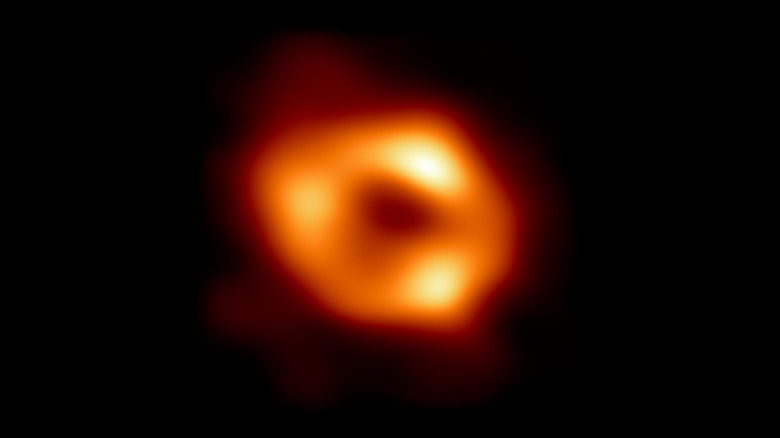The Milky Way's Supermassive Black Hole Is Spinning Faster Than We Thought
A new paper published in the journal Monthly Notices of the Royal Astronomical Society has proposed something quite intriguing. According to the authors of that paper, the Milky Way's supermassive black hole, which is known as Sagittarius A* (Sgr A*), is spinning close to its maximum speed, much faster than we previously anticipated.
This discovery has far-reaching implications for our understanding of how black holes form, as well as the processes that are associated with these cosmic items, a theoretical physicist not involved with the project explained to Live Science.
What the researchers discovered is that the Milky Way's supermassive black hole is spinning somewhere between .84 and .96, close to the top limit that our current model of black holes allows for. See, our current model for understanding the rotational speed of black holes suggests that their spin speed is defined between values of 0 and 1, with 1 being the maximum speed of the black hole.
The easiest way to understand it is to think of how we measure the spin speed of planets and stars. Normally, the speed of those spins is determined by the way that the mass is distributed throughout the star, planet, or other cosmic body. However, black holes aren't judged that way. Instead, scientists judge the spin speed of black holes based on the angular momentum they experience.
Because of the extreme gravitational forces at work here, black holes literally twist up the fabric of space-time when they spin. This causes anything near that force to be dragged along with it. So, while the Milky Way's supermassive black hole is spinning close to its maximum speed, it's also dragging space-time along with it. This is known as "frame dragging" or the "Lensing-Thirring effect."
The idea of frame dragging is meant to help us understand the way that space around a black hole behaves. And in order to do that, we need to know its spin. It's also the frame dragging that gives life to the weird visual effects we often hear about surrounding black holes, though it's sometimes hard to photograph those since black holes do not emit any kind of light.
But that frame dragging can sometimes create shadows of its own, or light rings that form within the frame-dragging effect, further driving our understanding of these cosmic objects. The new study is especially interesting, and I recommend that anyone who was excited about the first images of Sgr. A* check it out for more information on just how the spin of the Milky Way's supermassive black hole is literally changing space around it.
